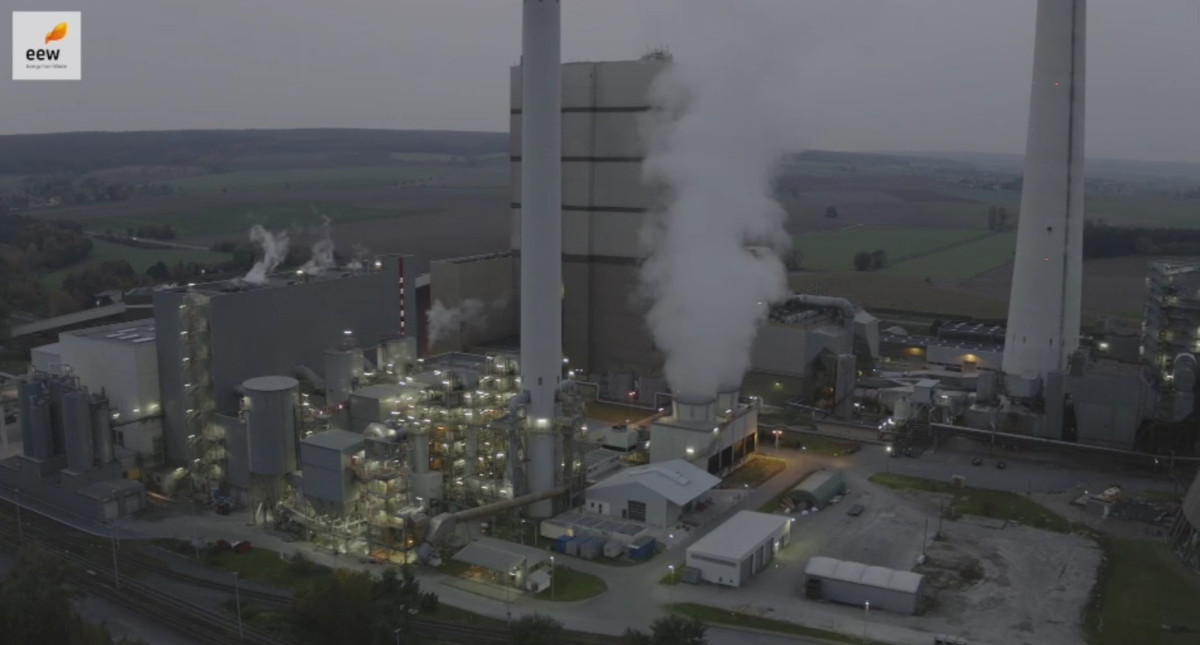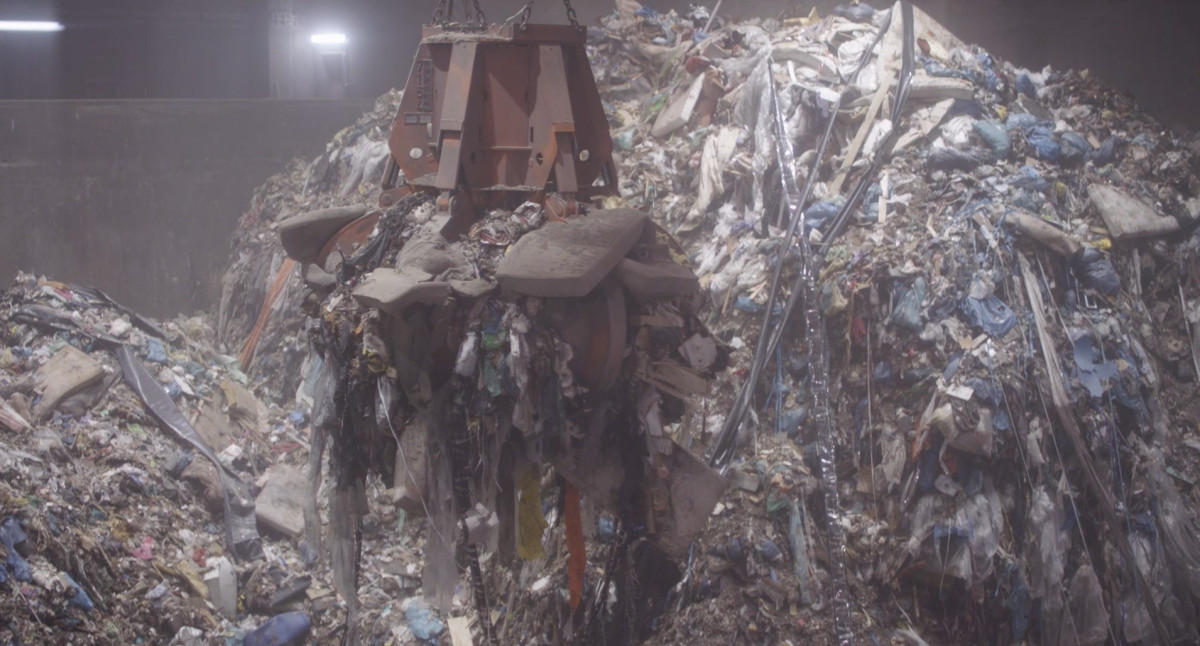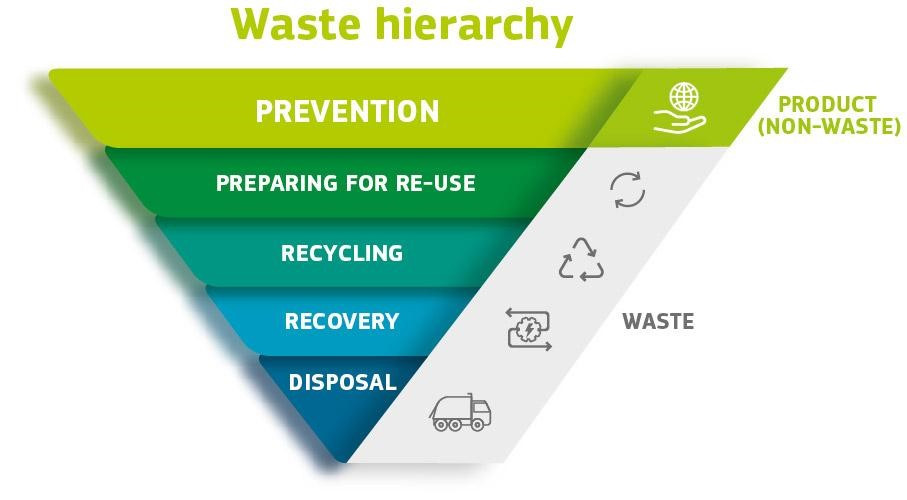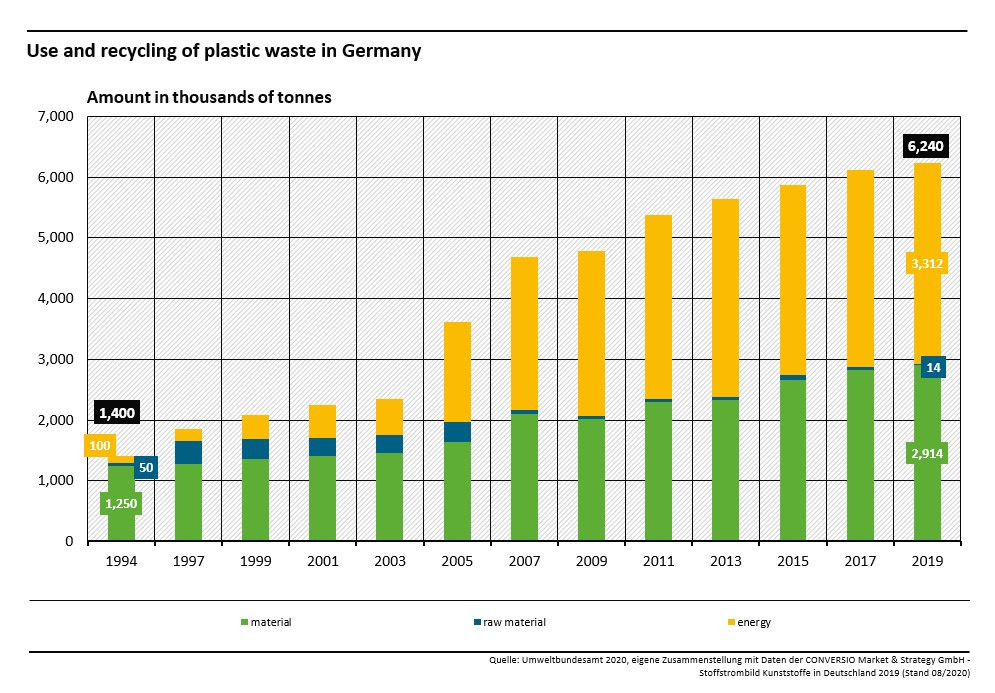EU climate ambitions spell trouble for electricity from burning waste
The EU's plans to become climate-neutral by mid-century add further fuel to the heated debate about the environmental impacts of incinerating waste to generate power. Will waste to energy (WtE) follow coal, oil, and natural gas as a high-emissions energy source headed, eventually, for the rubbish heap? Or can the technology survive because it prevents even higher CO2 emissions from landfill sites?
A number of advocacy groups, such as Zero Waste Europe (ZWE), a Brussels NGO, call for ending incineration to keep decarbonisation goals within reach.
“Once we phase out coal, incineration becomes the most polluting source of energy,” says ZWE’s Janek Vähk. “Each ton of incinerated waste raises the carbon impact of the EU’s energy system and, critically, undermines the EU’s 2050 net-zero emissions target.”
Proponents view the technology through an entirely different lens: as a win-win-win proposition. After all, it disposes of garbage, an ecological scourge, while generating energy. Moreover, the bi-products of incineration can be used in road and building construction.
“Waste to energy incineration is a boon to the energy transition,” says Peter Werz from EEW Energy from Waste, an owner and operator of German WtE facilities. “These plants deliver energy to the grid 365 days a year. This helps balance solar and wind, making the energy supply more secure,” Werz argues. He adds that the plants’ generation of heat can also significantly bolster the transition to low-carbon heating.
Burning waste powers 18 million EU homes
In Europe, 18 million citizens receive electricity and 15 million receive heating from WtE plants. Every waste incinerator in the EU generates usable energy – power, heat, industrial-use steam, or combinations of the three. In total, the plants account for 2.4 percent of the EU’s total energy supply. In the EU's largest member state Germany, WtE generation is particularly popular: covering 4.3 percent of primary energy use in the homeland of the energy transition, known as the Energiewende.
The town of Helmstedt, about halfway between Berlin and Hannover, is home to one of Germany’s largest waste to energy facilities. On the town’s edge, the compact plant with the long, thin smokestack boasts electricity production of 283,000 MWh a year, enough to power around 81,000 houses. This energy is the product of incinerating about 525,000 tons of municipal solid waste that otherwise would largely have wound up in landfill dumps.
The Helmstedt plant is one of 100 in Germany, and about 500 in Europe, that burn refuse at high temperatures. The combustion process in stoker furnaces boil water which powers steam generators that, in turn, generate electricity.
In terms of waste management, Europe’s fleet does heavy lifting, incinerating around 247 million tonnes of solid household waste a year. About 24 million tonnes of Germany’s solid refuse, about 40 percent of all such waste, is incinerated. In the EU, almost half of solid household waste was treated through incineration with energy recovery.
Positive or negative climate impact?
Waste to Energy significantly impacts the greenhouse gas budgets of Germany and the EU. Proponents say that European WtE incinerators’ generation of heat and power prevent the production of up to 50 million tons of CO2 emissions a year that would otherwise be generated by burning fossil fuels. Moreover, incineration diverts waste from landfill dumps which emit prodigious amounts of methane, an especially climate-damaging gas, and also cause air, water, and soil pollution. That conventional landfills constitute the worst of all options for waste is one of the very few facts that both supporters and critics of WtE agree upon, and they are already banned in many EU countries.
WtE’s adversaries argue that the climate impact of the power generated in the plants should be compared to renewables and modern gas works, which are much cleaner. Reuse and recycling - as EU directives stipulate - they argue, will soon be the new standard, which if fully implemented make the WtE industry obsolete.
"Waste is by no means a CO2-neutral energy source and therefore not a sensible substitute for coal," Tobias Quast, expert on waste and resource policy for Friends of the Earth Germany (BUND), told Berliner Zeitung.
In 2019, EU-based incinerators emitted 52 million tonnes of fossil CO2 – more than the annual greenhouse gas emissions of Portugal. The European Environment Agency estimates that the average carbon intensity (CO2e/kWh) of Europe’s energy sources – namely fossil fuels, nuclear, and renewables – is 249g CO2e/kWh. This means that, on average, the equivalent of 249 grams of CO2 is released for every kilowatt hour of electricity generated. A typical combined-cycle gas turbine power plant produces electricity with a carbon intensity of around 340gCO2e/kWh. The carbon intensity of incineration could be as high as 550g CO2e/kWh – thus double of that of the EU grid average. So problematic are the incinerators’ emissions that the EU has discontinued their funding – previously a major source of WtE investment.
Some EU countries and regions, such as Scotland, are expanding incineration capacity to help meet the 2035 EU target of limiting landfill use to no more than 10 percent of waste. Across the EU, incineration of solid waste rose by 38 million tons (nearly 120 percent) between 1995 and 2017. Germany, France, the Netherlands, Sweden, Italy, and the UK account for three quarters of the EU’s incineration capacity.
“Waste to energy is smart, careful, highly regulated waste management that also recovers energy at low cost.”
“Waste to energy is smart, careful, highly regulated waste management that also recovers energy at low cost,” says Ella Stengler of the Confederation of European Waste-to-Energy Plants (CEWEP), an umbrella association of WtE plant operators in Europe. “It will play a positive role in the transition to a carbon neutral economy by handling the solid waste that can’t be recycled. Otherwise, waste ends up in landfills, dumps, or worse, in the ocean.”
The WtE sector itself admits that WtE doesn’t make sense as an energy source alone. “The waste-to-energy sector isn’t first and foremost an energy producer,” says Aurélien Ballagny of European Suppliers of Waste-to-Energy Technology (ESWET), a Brussels-based lobby organisation. “You can’t compare waste to energy with, say, modern gas plants in terms of efficient energy production. But gas plants don’t remove non-recyclable waste. Our perk is that we do both at the same time.”
“Solid waste is a very complex source of fuel, if you can even call it a fuel,” explains Carmine Trecroci, an economist at University of Brescia, Italy. “There’s glass, rubber, bio-waste, metals, paint, and other materials in it. Its emissions per unit of generated energy is much higher than state-of-the art gas or even coal plants.”

The operator of the Helmstedt plant, EEW Energy from Waste, praises the facility as “energy for the region and protection for the environment.” The facility’s purification processes cleanse incineration’s fumes, which exit the smokestack as harmless smoke, according to an EEW video.
But experts such as Trecroci say that despite the sophisticated filters and cleansing processes of a modern plant, the fumes exiting the smokestack contain significant amounts of nitrogen oxides, particulate matter and other noxious elements. A long-term study in the Netherlands revealed that a WtE plant near the harbor town of Harlingen emitted toxic emissions that passed into the bloodstreams of livestock.
Critics warn of harmful side effects
There are difficulties in measuring the exact impact of these emissions in overall air pollution, Trecroci says. ZWE says the monitoring methods are full of loopholes that disguise the real emissions output. In stark contrast to the claims of Trecroci and ZWE, industry association CEWEP maintains that WtE is one of the most highly regulated industries in Europe, and emits very low levels of toxins.
“It’s not like the garbage just disappears into thin air.”
The matter left over after burning poses further problems. Incineration leaves between 200 and 300 grams of leftover ashes per kilogram of incinerated waste. “It’s not like the garbage just disappears into thin air,” says Trecroci. “Up to a third of it still has to be disposed of.” Some of the ash can be treated and then used in making asphalt and cement. But where there are no local markets, the leftover usually ends up in a special dump.
Much worse, say experts, is incineration waste left over from the likes of radioactive and highly toxic materials that get mixed into garbage bins. This is called fly ash and must be disposed of at special hazardous waste sites. While the components of fly ash vary, it can contain arsenic, chromium, lead, and mercury.
Could CCS become a lifeline?
As far as CO2 emissions are concerned, the industry sees carbon capture and storage (CCS) as a lifeline, where appropriate and feasible. “If we could neutralise the CO2 in some way, like capture it and use it constructively, then WtE would become a carbon sink, a technology with a negative footprint,” says industry representative Stengler, referring to the emissions that, otherwise, would stem from the biodegradable part of waste. This, though, she says, depends on the creation of a market for carbon and the feasibility of carbon storage.
In the Netherlands, a WtE facility in Duiven is supplying a local horticultural greenhouse with CO2 to promote plant growth. The Helmstedt plant is working with the city to produce hydrogen that can run Helmstedt’s public buses.
Opponents, though, say WtE plants should – and eventually will, as they do in Denmark and Sweden – pay carbon prices, which at the moment they do not, unlike fossil-fuel power stations burning coal or gas. Were this to change, WtE would find it even harder to break even. The high cost of purification and filters already make WtE energy a costly proposition, whether considered in terms of waste removal or energy production, according to environmental group ZWE. Industry group CEWEP, on the other hand, maintains that WtE is a low-cost option for both purposes.
Future in the balance
The future of the WtE sector currently hangs in the balance, and it is not only carbon emissions that could seal its fate, but also the EU’s circular economy initiatives, a pillar of the European New Deal. The new Circular Economy Action Plan lays the basis for a carbon-neutral, environmentally sustainable, toxic-free, and fully circular economy by 2050.
In a nutshell, the EU envisions a sustainable system that largely designs out waste and pollution, keeps products and materials in use, and regenerates natural systems. Products will have a full lifecycle: from production to decomposition or reuse. Waste prevention, recovery, reuse, and recycling, including the creation of markets for waste-derived raw materials, are key objectives, which stand in a hierarchy of priority (see graphic below).
This model, should it be rigorously adopted, obviously puts the WtE sector in a bind. Firstly, incineration is a one-way endeavour and thus antithetical to circularity.
Secondly, the question looms: How much waste will be left over for the furnaces to burn, should the circular economy transpire as planned? Since recovery and removal fall at the bottom of the hierarchy, the incineration industry will become the recourse of last instance: the place where the last, leftover, unavoidable, unrecyclable waste lands. This means that the industry will receive less solid waste to burn, and in particular less plastic – the waste material with the highest energy value.
Circular economy vision vs paltry recycling reality
“The amount of waste to be burned will be less and less as the circular economy emerges over time,” says Trecroci. “The volumes will be less than the facilities require to make business sense. The incineration capacity of WtE plants will become redundant, it’s that simple.”
Today, in northern Italy, argues Trecroci, no new incinerators are being built for the very reason that there’s no longer enough waste. In Copenhagen, the WtE plant there requires imported waste from across Europe to maintain operations.
The WtE industry fires back at this calculation. For one, old-fashioned landfills have no place at all in Europe’s sustainable economy of the future. They are already nearly non-existent in Germany, the Netherlands, Austria, Belgium, Denmark, Sweden, and Finland. So what will happen with the residual waste?, the plant owners ask. The industry claims that half of solid household waste is non-recyclable.
Moreover, as of 2021 shipments of unsorted plastic waste from the EU to non-OECD countries are banned. Since 2019, the EU exported 1.5 million tonnes of plastic waste (mostly to Turkey and Asian countries), this waste will now have to be handled in the EU. Europe does not yet have the necessary infrastructure to recycle so much unsorted plastic waste, most of which is thus incinerated.
Even in Germany, which boasts the reputation of a recycling poster child, only about half of plastic waste that lands in recycling bins is actually recycled: 46 percent. The rest is incinerated. EU measures are pushing this figure up, but today plastics recycling falls far short of its high-minded ideals.
“The waste-to-energy sector has a pivotal, positive role to play in Europe’s circular economy,” says Stengler. “We’re completely behind the bid to recycle plastics. This is right and eventually feasible.”
Stengler points out that Europe’s incinerators burn not only residual municipal waste but also commercial and industrial waste. A CEWEP study shows that in 2035, when EU circular economy measures become fully operative, there will still be around 142 million tonnes of residual waste that will not be recycled or landfilled – and thus will require treatment. The EU’s current WtE incineration and co-incineration capacity is 101 million tonnes.
Environmental groups question the industry's calculations. They claim that rigorous waste management can reduce residual waste to almost nothing. ZWE and Öko-Institut, a German think tank, argue that, “Once plastics fall out of the waste load as well as more recyclable refuse, such as paper, wood, and gas, the WtE isn’t going to have much left to burn. It will be just wet biomass, like coffee grounds and ice cream cartons. This doesn’t have much energy value at all.” Environmental groups ZWE and BUND also worry that the construction of new plants will create a “lock-in effect” and disincline locals to recycle.
“There’s never going to be zero leftover waste,” counters Julia Vogel of German Environment Agency (UBA), the country's central environmental authority. “Incineration makes sense for this last residual waste that cannot be recycled – and the fact that it produces energy too, well, that’s a bonus."




